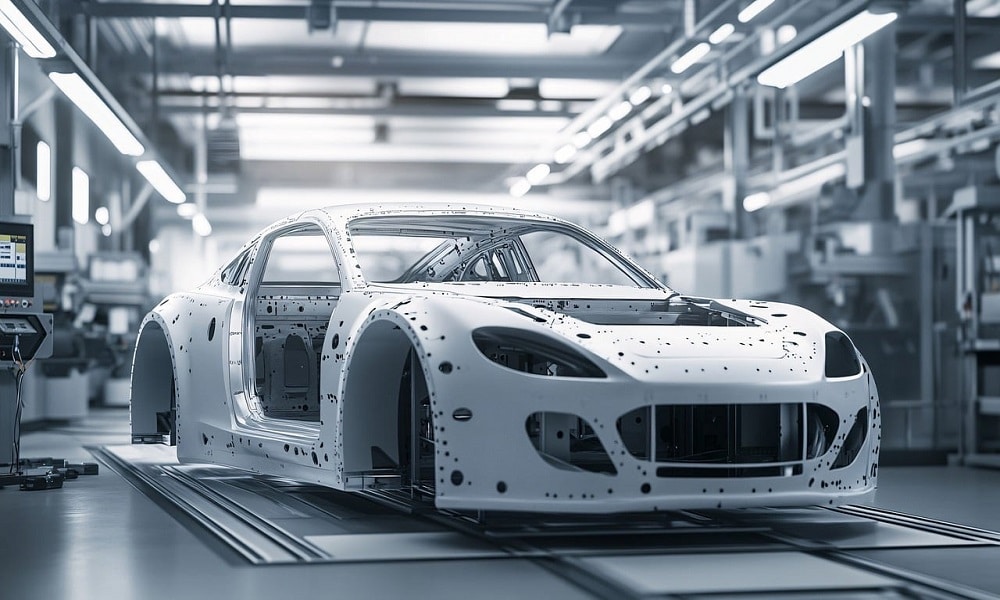The rise of Software-Defined Vehicles (SDVs) has transformed the automotive industry, and auto mechanics are adapting to the shift. SDVs rely heavily on software to control and enhance vehicle functions, including navigation, performance, safety systems, and diagnostics. This evolution requires mechanics to adopt new skills, tools, and approaches to maintain and repair these technologically advanced vehicles. Here, we explore how auto mechanics work with SDVs, the challenges they face, and how they are reshaping their roles in the automotive ecosystem.
Understanding Software-Defined Vehicles
SDVs are vehicles where software, rather than hardware, defines and manages key functionalities. They are equipped with advanced computing platforms, extensive sensor arrays, and connectivity features that enable real-time communication with cloud services, other vehicles, and infrastructure. Unlike traditional vehicles that rely primarily on mechanical systems, SDVs integrate software into nearly every aspect of operation, from engine performance to infotainment systems.
Auto mechanics must now be proficient not only in mechanical repairs but also in software diagnostics and updates. This shift has redefined what it means to be a skilled mechanic in the era of connected vehicles.
Tools and Technologies for Working with SDVs
To effectively work on SDVs, auto mechanics use specialized tools and technologies tailored for software-intensive vehicles; go here to learn more:
- Diagnostic Tools:
- Modern SDVs feature onboard diagnostic systems that generate fault codes when issues arise. Mechanics use advanced diagnostic tools, such as scan tools and laptops with specialized software, to interpret these codes and identify problems.
- These tools connect to the vehicle’s system via ports like the OBD-II (On-Board Diagnostics) interface or wireless connections.
- Software Updates and OTA Capabilities:
- SDVs frequently receive over-the-air (OTA) software updates to address bugs, enhance features, or improve security. Mechanics must verify the success of these updates and troubleshoot any related issues.
- In some cases, mechanics may manually update or reinstall software using authorized tools provided by manufacturers.
- Cloud Integration:
- Mechanics often rely on cloud-based platforms for accessing diagnostic data, repair instructions, and real-time support from manufacturers or other experts.
- Programming and Calibration Tools:
- Certain repairs require reprogramming or calibrating vehicle systems, such as advanced driver-assistance systems (ADAS), which depend on precise sensor alignment and software synchronization.
- Augmented Reality (AR) and Virtual Reality (VR):
- AR and VR tools are increasingly used to provide step-by-step repair instructions, visualize complex components, or simulate repairs before they are performed.
Skills Auto Mechanics Need for SDVs
Working with SDVs demands a hybrid skill set that combines traditional mechanical expertise with advanced technological knowledge. Key skills include:
- Proficiency in Software Diagnostics:
- Mechanics must understand how to use diagnostic tools and interpret error codes generated by the vehicle’s software systems.
- Understanding of Electrical Systems:
- SDVs are powered by intricate electrical and electronic systems. Mechanics must be adept at diagnosing and repairing issues within these networks.
- Coding and Programming Knowledge:
- Basic knowledge of programming languages and software logic is increasingly important for diagnosing and repairing software-related issues.
- Data Analysis Skills:
- Mechanics must analyze data from sensors and diagnostics to identify patterns, predict potential failures, and recommend preventive measures.
- Continuous Learning:
- As SDV technology evolves rapidly, mechanics must stay updated on new systems, software updates, and tools through training and certifications.
Challenges in Working with SDVs
The transition to software-defined vehicles presents several challenges for auto mechanics:
- Complexity of Systems:
- The integration of software and hardware in SDVs creates complex systems that are more difficult to diagnose and repair compared to traditional vehicles.
- Proprietary Software:
- Many automakers use proprietary software, limiting access to diagnostic tools and repair data. Mechanics often need manufacturer authorization or specialized training to work on these systems.
- Cybersecurity Concerns:
- As SDVs are connected to the internet, they are vulnerable to hacking. Mechanics must ensure that repairs and updates do not compromise cybersecurity.
- Cost of Tools and Training:
- Advanced diagnostic tools and training programs for SDVs can be expensive, posing a financial challenge for smaller repair shops.
- Regulatory Compliance:
- Mechanics must adhere to strict regulations governing data privacy, emissions, and safety standards when working on SDVs.
Industry Adaptation and Collaboration
The shift to SDVs is driving changes across the automotive repair industry. Key adaptations include:
- Training Programs:
- Automotive schools and manufacturers are offering specialized training programs and certifications to equip mechanics with the necessary skills to work on SDVs.
- Collaboration with Manufacturers:
- Repair shops are forming partnerships with automakers to gain access to proprietary tools, software, and repair data.
- Use of AI and Machine Learning:
- AI-powered diagnostic systems are becoming common, helping mechanics identify issues faster and with greater accuracy.
- Standardization Efforts:
- Industry groups are working to standardize diagnostic tools and repair procedures to ensure compatibility across different brands and models.
The Future of Auto Mechanics in the SDV Era
As SDVs continue to evolve, the role of auto mechanics will also transform. Future developments may include:
- Increased Automation:
- Automated diagnostic and repair systems may reduce the manual workload, allowing mechanics to focus on higher-level problem-solving.
- Remote Diagnostics:
- Mechanics may perform diagnostics and some repairs remotely, leveraging cloud-based platforms and IoT connectivity.
- Expanded Roles:
- Mechanics may transition into broader roles, such as vehicle software specialists or cybersecurity consultants.
- Focus on Sustainability:
- With the rise of electric SDVs, mechanics will play a critical role in ensuring sustainable practices, such as recycling batteries and optimizing energy efficiency.
The emergence of software-defined vehicles is reshaping the automotive repair industry, challenging auto mechanics to expand their skill sets and embrace new technologies. By adopting advanced diagnostic tools, investing in ongoing education, and collaborating with manufacturers, mechanics can successfully navigate this transition and thrive in the SDV era. As vehicles become increasingly sophisticated, the expertise of well-trained mechanics will remain essential to ensuring their safety, performance, and reliability.


